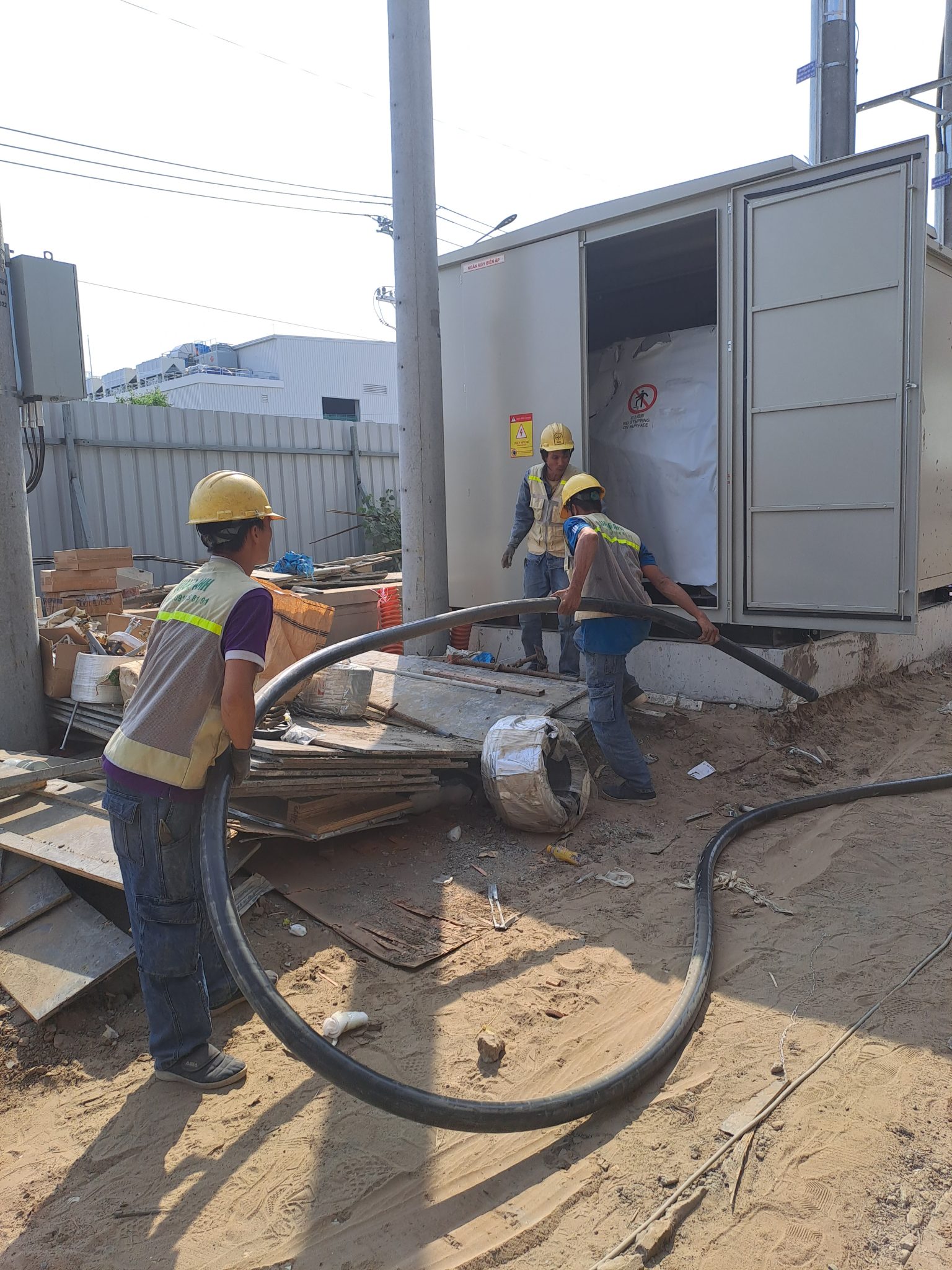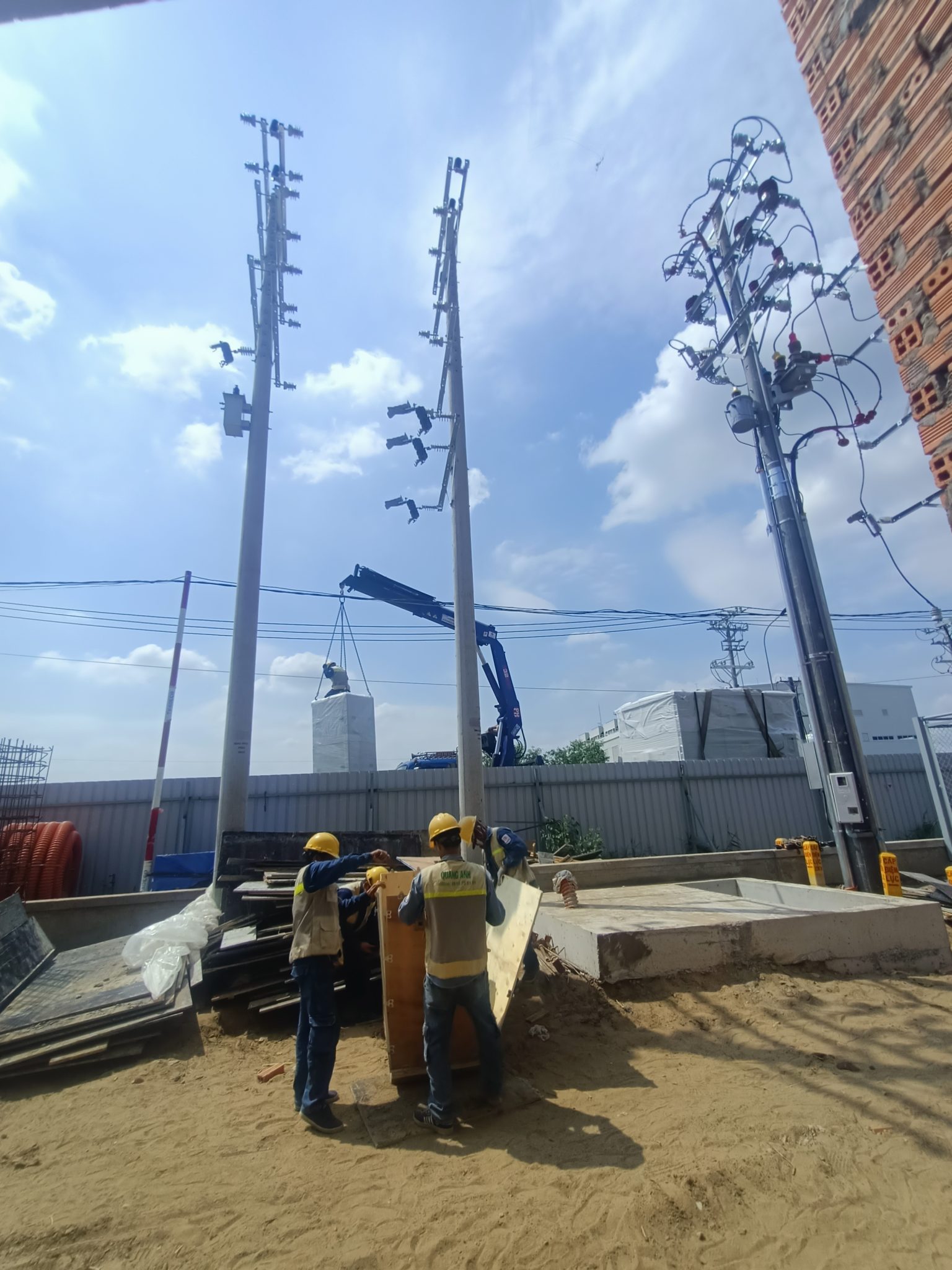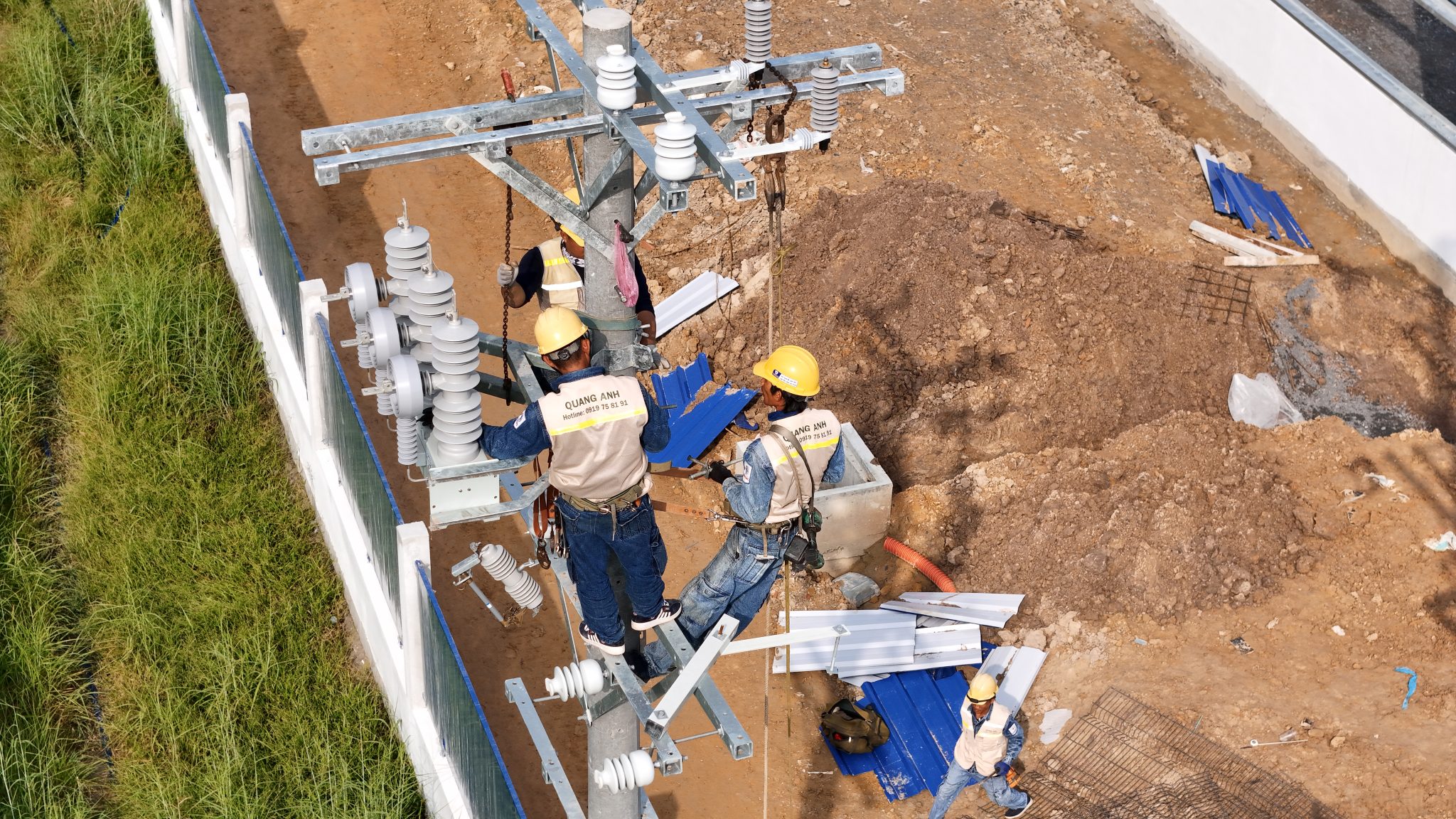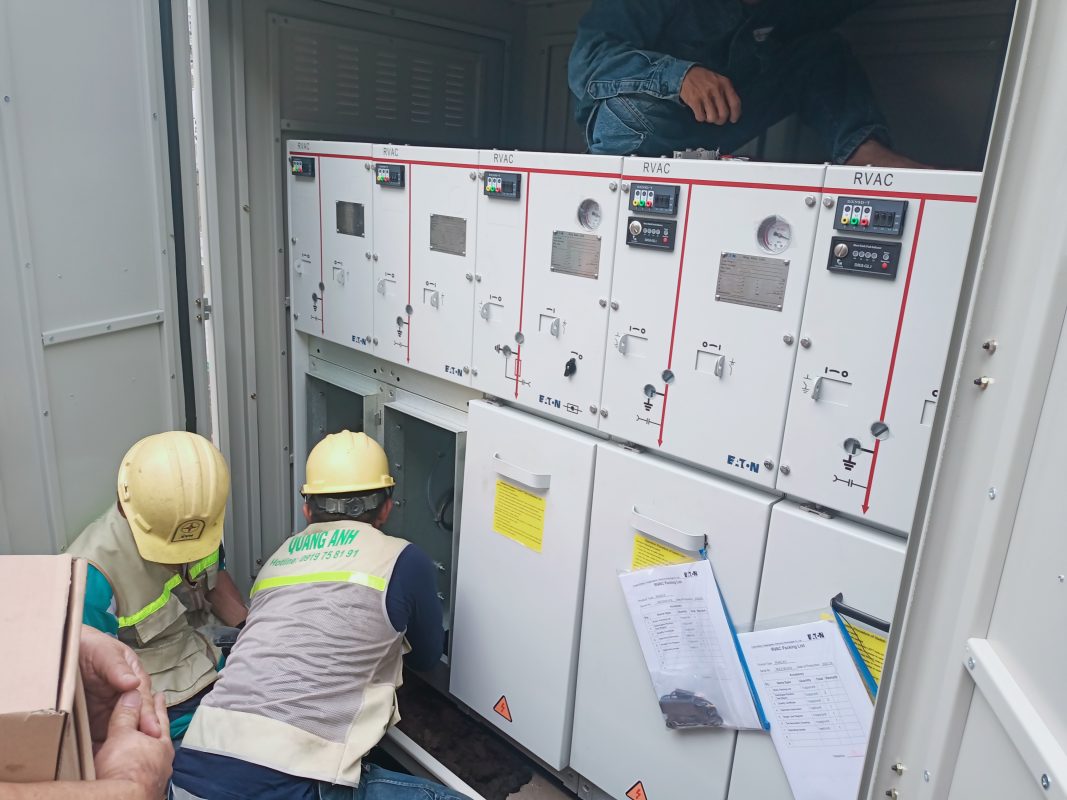The electrical system in industrial plants serves as a crucial part of infrastructure, providing stable and safe power to support production activities.
Key Components in Industrial Plant Electrical Systems
The plant’s electrical setup consists of main components like transformers, medium and low voltage switchgear, generators, and transfer switches. Transformers adjust high voltage power from main lines to usable levels. Medium and low voltage switchgear distribute power to different areas, while generators and transfer switches ensure continued operation during outages and prevent disruptions.
A complex structure is essential to meet the high demands for stable, safe power in industrial production. The following insights will give business leaders and system engineers an in-depth understanding of each component.
1. Transformers, Medium and Low Voltage Panels
- Transformers are pivotal in handling large power lines, converting this to suitable voltages for plant operations, ensuring equipment runs efficiently.
- Medium and low voltage switchgear are critical for splitting the main power feed into manageable circuits, thereby optimizing power distribution to different areas.
2. Power Generators and Transfer Switches
- Generators serve as backup power sources, vital for sustaining factory operations during grid disruptions.
- Transfer switches facilitate seamless transitions between grid power and backup, avoiding production interruptions.
3. Distribution Panel Systems
- Distribution panels ensure safe, effective path management for electricity flow, safeguarding both workers and equipment.
4. Machinery Control Panels
- Control panels are key in managing automated or semi-automated machinery in the plant production lines.
5. Supplementary Systems
- Light electrical systems support control equipment, communications, office devices, and security systems.
- Lighting systems bolster safe and efficient working conditions across the plant.
Most industrial plant electrical systems utilize three-phase, 380V configurations, catering to high power demands from production equipment.

Functions of Electrical Systems
The industrial electrical framework provides power for machinery and devices, ensures precise control, and enhances user safety. Electrical safety measures are vital, mitigating risks of occupational hazards.
Ensuring uninterrupted, safe electrical power, the system plays an indispensable role in both economic and production sectors. Here are its main functions:
1. Supplying and Converting Energy
- Energy Supply: The system offers power from diverse sources, like hydro, thermal, solar, wind, and nuclear, evenly distributed across regions.
- Voltage Conversion: Utilizes transformers from top brands to adapt voltage for practical use.
2. Transmission and Distribution
- Transmission: National grids deliver electricity from production sites to consumption areas through high-voltage routes.
- Distribution: Effectively channels power nationwide to homes, businesses, and production facilities.
3. Management and Control
- Load Management: Balances electrical demands by effectively adjusting to fluctuating consumption levels.
- System Control: Monitors and maintains the network to ensure efficient operations.
4. Assuring Safety and Quality
- Safety Assurance: Prevents accidents from electrical faults or external factors, maintaining a safe environment.
- Quality Power: Ensures stable power for productivity and daily life.

Installation and Maintenance Considerations
Installing a plant’s electrical network demands strict adherence to safety standards, employing quality components and periodic maintenance are crucial for prolonged system reliability and equipment lifespan.
Optimal installation and upkeep require an attentive approach to reduce industrial safety risks, emphasizing protective measures during setup to preserve worker and machine safety in demanding environments.
Achieving top operational efficiency necessitates following maintenance routines and national electrical design standards. Consistent energy supply without disruption is key to minimizing energy waste.
A detailed design must safeguard while optimizing operational costs, strengthening competitiveness by reducing production expenses. Availability of components before work begins avoids supply disruptions.
Vital techniques include proper cable labeling, safe cable tray installation, static-proof painting, and strategic power consumption calculations to enhance efficiency.
Routine maintenance is vital for consistent system longevity. Activities like thorough inspections, system testing, and load monitoring help preemptively address possible issues.

The plant’s electrical system is vital for stable production efficiency and enhanced labor safety, extending device longevity. Investing in advanced electrical systems is essential for strategic industrial plant growth.
For professional consultation on designing and installing plant electrical systems, contact QuangAnhcons at +84 9 1975 8191.
QuangAnhcons provides comprehensive services for the design, installation, and maintenance of industrial plant electrical systems, adhering to national safety standards.


Related Posts
Factory Electrical Systems: Comprehensive Design and Implementation Guide
Discover the detailed and safe process of factory electrical systems design and implementation. [...]
Oct
Blueprints Required for Factory Construction Permits
Discover the necessary blueprints in factory construction permit applications, from floor plans to electrical and [...]
Oct
What Are the Requirements for a Factory Construction Permit? A Comprehensive Guide
Explore the documentation and steps needed to secure a factory construction permit for streamlined project [...]
Oct
Factory Construction Permit Procedures in Vietnam: Essential Guidelines and Documents
Learn the procedures for securing a factory construction permit in Vietnam, focusing on document preparation [...]
Oct
Key Steps in the Factory Construction Process
Discover the essential steps and requirements for building factories. [...]
Oct
Comprehensive Electrical Substation Solutions by Quanganhcons
Discover the cutting-edge electrical substation solutions offered by Quanganhcons for industrial applications. [...]
Oct
Investment Costs for a 1MWp Solar Power System and Influencing Factors
Explore the investment costs for a 1MWp solar power system in Vietnam and the influencing [...]
Sep
QuangAnhcons: Elevating Wind Energy Solutions
Explore QuangAnhcons' leadership in wind energy and renewable solutions in Vietnam. [...]
Sep
Electrical Contractor Strategies at Becamex Industrial Park
Discover the strategic advancements and partnerships of the electrical contractor at Becamex Industrial Park. [...]
Sep
Investment Insights for 1MW Wind Energy in Vietnam: Costs and Opportunities
Discover the detailed analysis of costs and opportunities for investing in 1MW wind energy projects [...]
Sep
Advanced Electrical Installation Solutions by QuangAnhcons
Explore advanced electrical installation solutions and modern technology with QuangAnhcons. [...]
Sep
Enhancing Industrial Electrical Services with Quanganhcons
Discover Quanganhcons' expertise in industrial electrical services, offering efficient and sustainable power systems. [...]
Sep
Comprehensive MEP Solutions by QuangAnhcons: From Design to Maintenance Excellence
Discover optimal MEP solutions with QuangAnhcons, dedicated to excellence from design through maintenance. [...]
Sep
Comprehensive Electromechanical Contracting Solutions by QuangAnhcons
Explore QuangAnhcons' comprehensive services for efficient and safe energy system solutions. [...]
Sep
QuangAnhcons: Empowering Industrial Energy Solutions
Discover how QuangAnhcons delivers optimal industrial EPC solutions. [...]
Sep
Effective Industrial Construction Management and Execution
Optimize your industrial projects from design to execution with our contractor services. [...]
Sep
QuangAnhcons: Pioneers in M&E and Renewable Energy Solutions
Discover QuangAnhcons' innovative M&E services and renewable energy solutions. [...]
Sep
QuangAnhcons: Expertise and Outstanding Services in the Electrical Sector
Discover the unmatched expertise and services of QuangAnhcons, setting superior standards in the electrical contracting [...]
Sep
QuangAnhcons: Innovation and Precision in Industrial Electrical Contracting
Discover QuangAnhcons, a top contractor offering superior electro-mechanical solutions. [...]
Aug
Expert Solutions for 2x2500kVA Substation Projects with QuangAnhCons
Explore QuangAnhCons, a forefront entity in designing and constructing large industrial substations. [...]
Aug